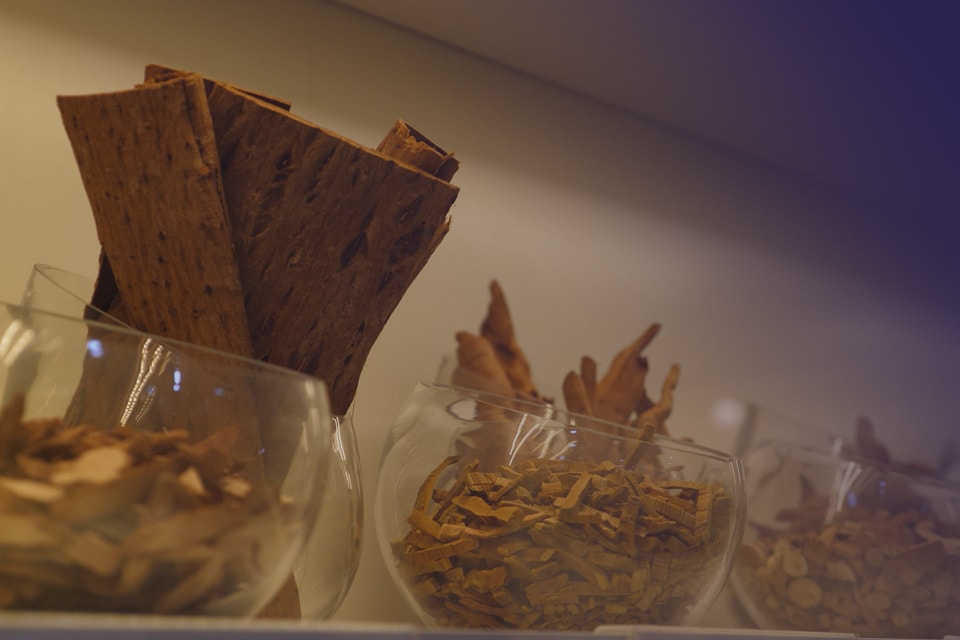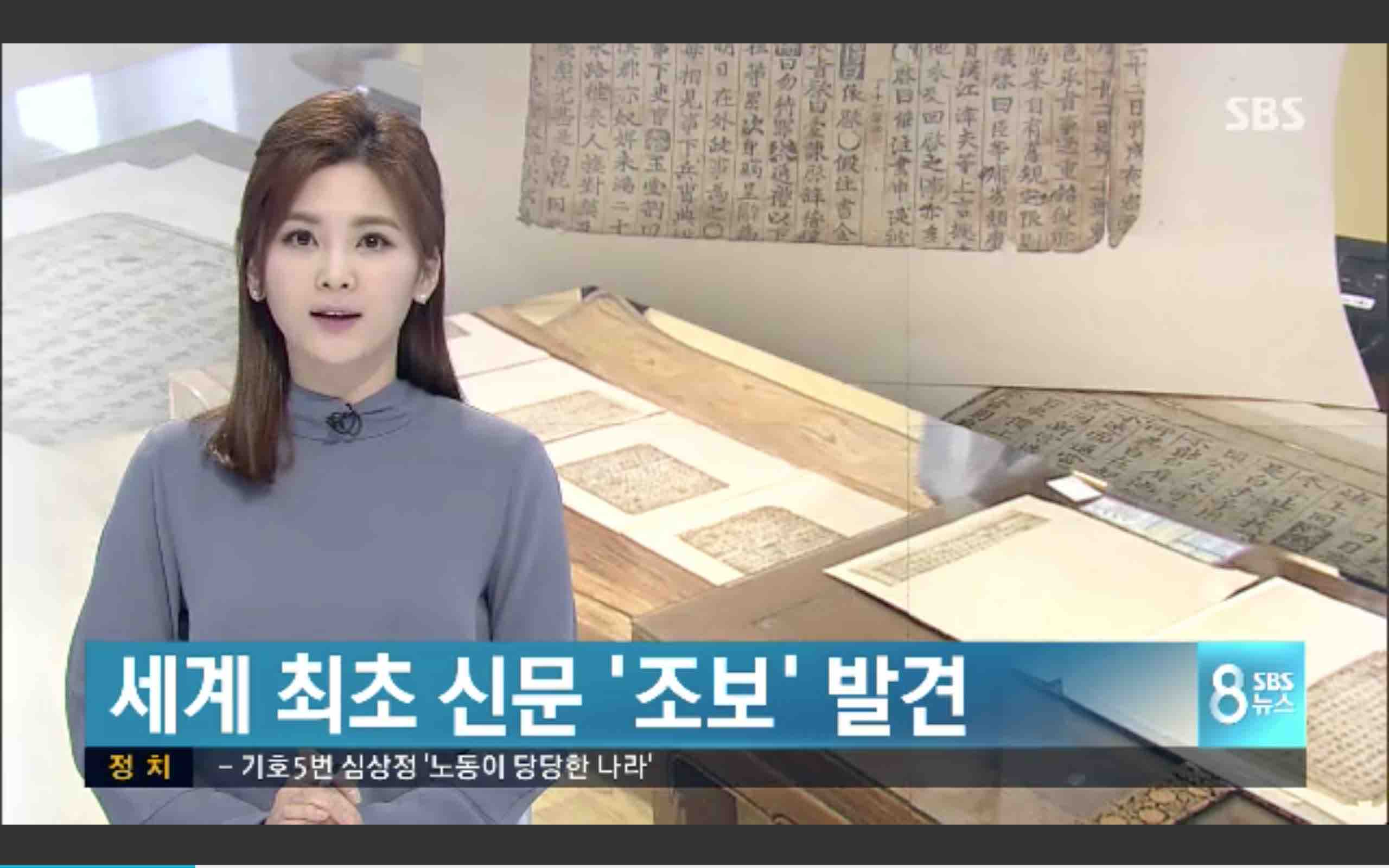
Traditional Korean Medicine Makes Bold Claims, but Can It Be Trusted?
Walk half a block from Jegi-dong station in northeastern Seoul, and a massive traditional gate comes into sight. Beyond it, stores after stores sell mysterious ingredients out of big plastic bags. Shopkeepers dust the merchandise—mostly dried plant materials—in the open, sending particles flying in the air. Some corners are vaguely reminiscent of a butcher shop, with different animal parts—bear gallbladder, gutted geckos, and dried frogs—on display.
This is Yangnyeong Market, dubbed “South Korea’s biggest traditional medicine complex” by the city government. It includes pharmacies, specialty shops, clinics and cafes—in total, some 800 businesses.
At the center of the market, the newly built Seoul K-Medi Center has been open to the public since last October. Tax money paid for the construction cost of 46.5 billion Korean Won (roughly $41 million), divided among the national government, Seoul Metropolitan Government, and Dongdaemun District which encompasses Jegi-dong.
The question is as to whether this center, which “promotes the excellence and safety of traditional K-medi,” warrants such funding. Traditional Korean medicine (TKM) occupies a murky place in the country’s medical system. It is permitted, but does not undergo rigorous testing to prove efficacy or harmful effects on the human body.
South Korea recognizes two medical licenses: a doctor’s license, and a haneuisa (TKM practitioner) license. Under this system, a TKM practitioner is allowed to function as a primary medical care provider. Some TKM treatments are covered by the national health insurance. The most common treatments include acupuncture, moxibustion (burning plant shavings on certain points of the body) and chuna (a Korean form of chiropractic treatment).
Then there is medicine. It comes in powder, extracts and mixed decoctions made from mashing and boiling natural ingredients. The South Korean Ministry of Food and Drug Safety (MFDS) currently recognizes 601 such ingredients— derived from plants, animals or minerals—as “natural drugs” that are acceptable for medical use.
But the biggest problem with TKM lies with these natural drugs. For example, its practitioners call for using the nut of the Areca catechu tree to treat urinary problems, indigestions and tapeworms. Dried geckos allegedly invigorate your kidneys, strengthen your lungs, and alleviate your cough. The root of the Asarum heterotropoides plant is said to cure ailments in the respiratory system and lower a fever.
But if you believe the scientific community including the U.S. National Cancer Institute, Asarum plants contain a chemical called aristolochic acid (AA)—a proven carcinogen, mutagen and nephrotoxin (which is toxic to the kidney). Science Translational Magazine recently published a paper that found AA to be responsible not just for kidney damage and urinary tract cancer, but also for hepatocellular carcinoma, a common form of liver cancer. The U.S. FDA and Britain’s Medicines and Healthcare Products Regulatory Agency warns against consumption of asarum plants and the entire Aristolochiaceae family—to which the asarum plants belong.
Meanwhile, the Areca catechu nut has been a known carcinogen since 2003. The World Health Organization has concluded that “the areca nut… is carcinogenic to humans” and that “use of these products cannot be considered safe.”
Yet the lucrative traditional medicine industry and major government-funded institutions like the K-Medi Center and the National Development Institute of Korean Medicine (NIKOM) continue to claim that these and other substances are beneficial to human health, on the basis of canonical texts such as Dongui Bogam. The South Korean Ministry of Food and Drug Safety makes no mention of their harmful effects in its drug database. And these so-called natural drugs are exempt from clinical trial requirements and easily available for purchase—without any diagnosis or prescription—at places like Yangnyeong Market.
Dongui Bogam was written in the early seventeenth century by royal physician Heo Jun, and is considered a significant piece of scholarship in the development of traditional Korean medicine. It is a comprehensive survey of the human body, illnesses that afflict different parts, and the cures that can be deployed.
Some entries are bound to raise eyebrows. It goes that a magnet “replenishes the kidneys, fortifies the bone qi, adds to essence, and removes tension. It treats deafness and lubricates the joints. … Drinking water soaked in magnetite induces pregnancy.” Other entries include “If an infant has smallpox, the parents must not have intercourse” and “In case of difficult child delivery, let the mother hold [seahorses] in both her hands, and she will deliver as smoothly as a lamb does.”
So why are its contents accepted to this day, without clinical trials no less? Lee Eung-se, president of NIKOM, told Korea Exposé, “Our medicine has been refined through millennia of experience, So to prove all their effects through clinical trials would be extraneous.”
When asked about the scientific research that shows toxicity in traditional medicinal ingredients, he cast doubt on the validity of the studies themselves: “The carcinogen allegedly found in Areca nuts is aflatoxin, which is not part of Areca catechu but a potential contaminant in certain batches.” Still, he added, “If cooked and prepared in certain ways, all the toxins that could potentially exist in TKM ingredients can be properly nullified.”
No one knows how many people are adversely affected by the use of TKM, because there is no serious attempt at tracking the cases. The World Health Organization found in 2013: “Although herbal medicines are associated with many adverse events in the Republic of Korea, very few of these events are recorded by the national system of pharmacovigilance.” A major problem noted by the WHO was that adverse reactions to TKM treatments were not reported to the Ministry of Food and Drug Safety, but to the Association of Traditional Korean Medicine—the national TKM interest group—which is not required to share the information with the ministry.
Traditional medicine continues to thrive not just in South Korea, but also in other parts of East Asia like China, Taiwan and Vietnam. On the one hand, tradition in itself is seen as sufficient for justifying its existence. But the longevity of TKM also owes itself to the specific historical circumstance of modern Korea.
In the course of the twentieth century, this practice, once “associated primarily with the court,” became “more typically associated with maintaining the basics of healthcare, especially in rural areas,” writes John DiMoia, a Seoul National University professor specializing in the history of Korean medicine.
Rather than dying out under the onslaught of modernity, TKM came to be “celebrated as a core part of the national culture.” DiMoia argues that at the same time Western medicine became tainted to a degree by Japanese colonial rule from 1910 to 1945: “Encounters with biomedicine, moreover, were fraught with tension, as these experiences tended to carry extremely negative associations from the colonial period … with much of the enforcement for public health linked to the police bureau.”
In 1951, just six years after Korea’s independence, the newly established South Korean government started issuing TKM practitioner licenses. And in 1987, TKM, which had for centuries been called “Chinese medicine”—hanyak 漢藥—even in Korea, was officially renamed “Korean medicine”—hanyak 韓藥—in an attempt at claiming the tradition as the nation’s unique heritage.
Contesting the validity of TKM is difficult because it goes against such nationalist sentiment. And despite the lack of scientific proof of its efficacy, the demand for TKM in South Korea remains robust. In 2013, the Ministry of Health and Welfare estimated the value of the domestic market at 5.3 trillion won (roughly $4.7 billion). It is especially popular among the middle aged and those who are older. According to a 2017 government survey of 5,000 random citizens, 90.6 percent of the respondents aged sixty or above had used TKM, compared to only 43.1 percent of the respondents in their twenties. (Granted, young people don’t seek out as much medical assistance as seniors do, given their relative health.)
Recognizing that the popularity of TKM may be dwindling, the industry and the government have tried to modernize the field and market it abroad since 2006. The Ministry of Health and Welfare has been pouring hundreds of millions of dollars into its “Growth and Development Plan for Traditional Korean Medicine,” currently in its third five-year phase.
The Seoul K-Medi Center fits with this promotional scheme. Clearly inspired by the better known and more successful attempts to sell Korean music—commonly dubbed K-pop—it is the culmination of a decade-long effort by Dongdaemun District head Yoo Deog-yeol, who ran for the position in 2010 on a campaign to make the area an “undisputable hanyak district.”
The center hosts lectures and activities, all designed to demonstrate the wonders of TKM. The exhibit currently on display shows that the tradition is founded on Chinese cosmology and treats the human body as an extension of the universe, organized according to the principles of yin and yang as well as five elemental forces.
What the exhibit does not show is how much of the tradition contradicts established scientific facts.
Even Lee at NIKOM conceded, “We need to standardize our medicines and provide scientific, objective evidence [for their effectiveness]. We need to create a universally acceptable set of standards for TKM.”

